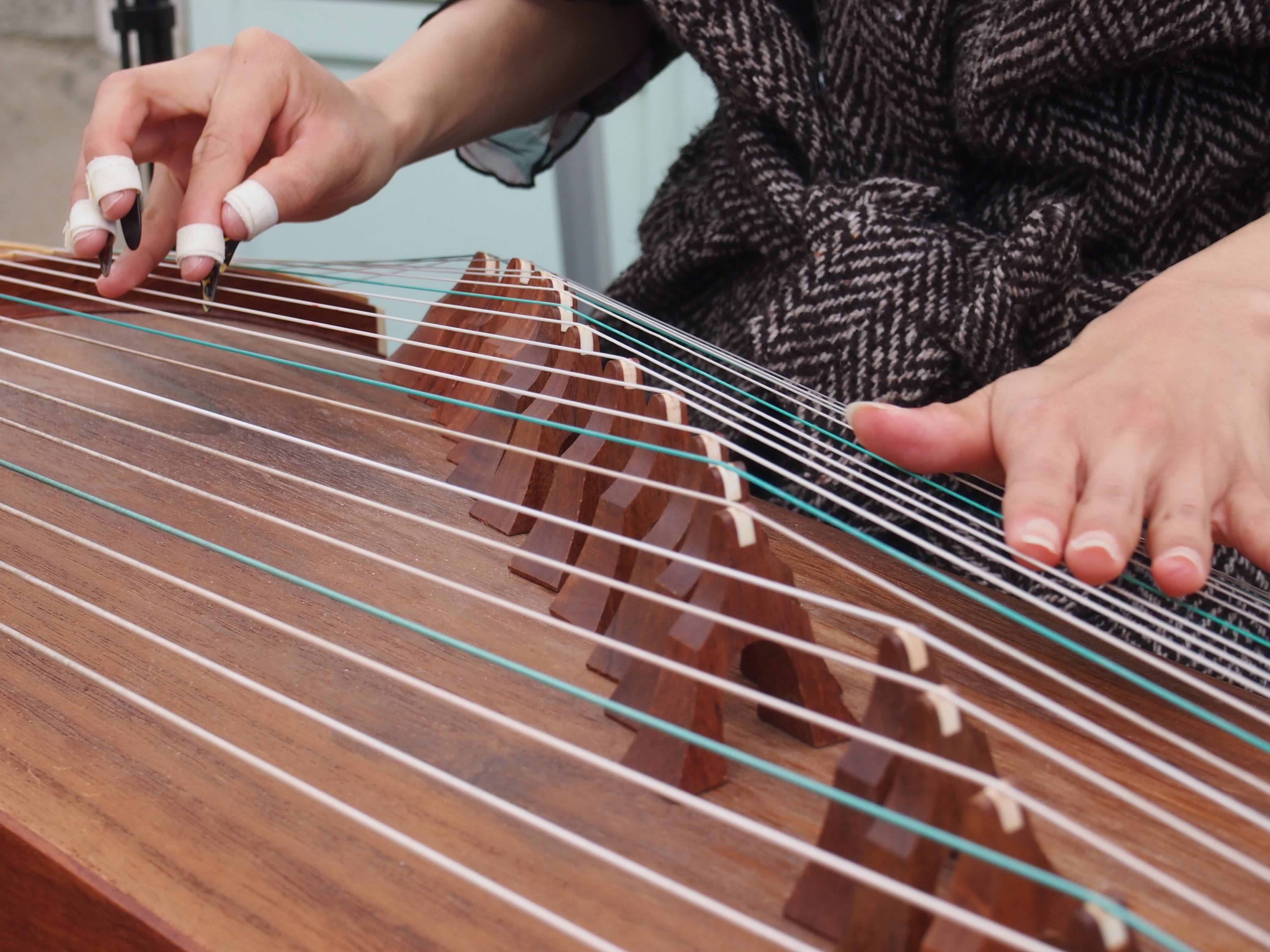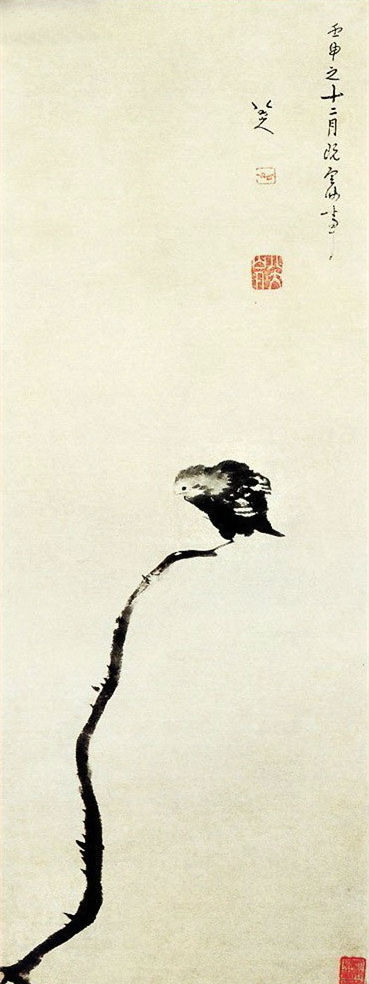
About the Guzheng
Enjoy the peonies while sitting in a cart, listen to the zheng while riding a horse. (Ancient Proverb, Tang dynasty)
 Photo © Daniel Gillet
Photo © Daniel Gillet
Guzheng, also known as zheng, is a traditional Chinese plucked string instrument that belongs to the zither family. Derived from the ancient Chinese qin (seven strings without bridges), guzheng is the forerunner of the Japanese koto, Korean kayagûm, Mongolian yatag, and Vietnamese dan tranh.
Made of wutong wood (paulownia tomentosa), the modern-day zheng contains 21 or 23 copper-wound steel strings with movable wooden bridges.
According to historical documents from the Qin dynasty (206 BC), one can trace the origins of this ancient instrument to the Warring States period (403 BC). Guzheng, also one of the main instruments of Chinese chamber music, became especially popular during the Qin and Tang (618-907 AD) dynasties. Since, it has evolved from 12 to 16 and 18 strings.
In 1961, Xu Zhengao, a reputed zheng artisan, together with Wang Xunzhi, one of the most influential Chinese folk musicians of the century, invented the 21-stringed modern zheng.
Capable of producing sound effects that evoke imageries such as the cascading waterfalls, thunder or birds’ chirping, the guzheng has diverse schools of performance style. Since the 1850s, its solo repertoire has evolved into a very rich technical complexity that requires a variety of 8-fingered techniques. Its contemporary— atonal, jazz, and experimental—compositions have also developed vastly since the 1980s.


